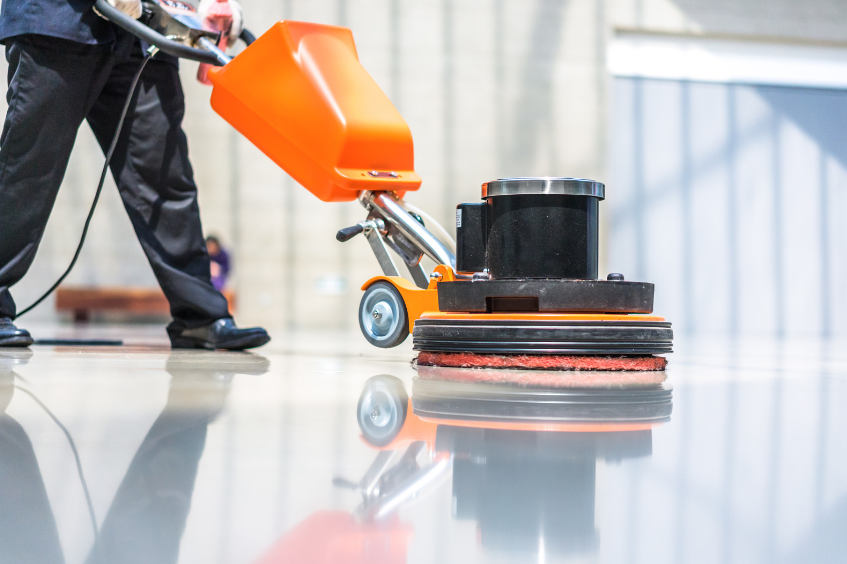
Green Wall Maintenance Checklist: Monthly Tasks to Keep Your Green Wall Lush
Green wall maintenance is essential for preserving the beauty and

In industrial settings, maintaining a clean environment is more than just a routine task—it’s a strategic necessity. Industrial cleaning plays a vital role in improving both workforce productivity and safety. A clean and organized workspace reduces hazards, enhances efficiency, and boosts employee morale. This blog explores the significant impact that industrial cleaning has on ensuring a safer and more productive workforce.
Industrial cleaning refers to the comprehensive process of maintaining a clean and well-organized workplace, ensuring that all equipment, workspaces, and facilities meet health and safety standards. In industries where machinery, chemicals, and heavy equipment are involved, industrial cleaning becomes essential to prevent contamination, accidents, and inefficiencies. Clean environments foster an organized workflow that supports overall business goals.
Regular industrial cleaning helps reduce equipment breakdowns and maintenance issues by ensuring machines and workspaces remain free from debris, dust, and contaminants. When machines operate smoothly due to cleanliness, it results in less downtime, allowing for continuous production and minimizing delays. Industrial cleaning ensures that equipment is always in optimal working condition.
A clean working environment greatly influences employee morale. Industrial cleaning helps create a workspace where employees feel safe and comfortable, leading to increased satisfaction and higher productivity. Workers who feel valued by their employers, particularly through a well-maintained workspace, are more likely to engage and perform at their best.
Industrial cleaning not only improves safety and comfort but also enhances efficiency. A clean and organized industrial environment allows workers to locate tools and equipment more easily, streamlining workflow and reducing wasted time. With fewer obstructions and hazards, industrial cleaning creates a more efficient workspace where tasks can be completed faster and more accurately.
One of the leading causes of workplace injuries in industrial settings is slip, trip, and fall accidents, often due to poor industrial cleaning practices. Accumulated debris, spilled liquids, and cluttered walkways can all contribute to these hazards. Proper industrial cleaning removes these risks by keeping floors, stairs, and pathways clear and safe for workers.
In many industries, workers may be exposed to harmful substances like chemicals, dust, and toxic materials. Without regular industrial cleaning, these substances can build up, posing serious health risks. Industrial cleaning is essential in maintaining clean air quality and reducing exposure to harmful elements, ensuring the health and safety of employees.
Cluttered and dirty environments hinder visibility and make access to emergency exits or safety equipment difficult. Industrial cleaning ensures that all areas are well-lit, accessible, and free from obstruction, minimizing the chances of accidents. Clean and open spaces allow workers to move around safely and respond quickly in case of emergencies.
Regular industrial cleaning not only keeps the workspace organized but also helps maintain hygiene standards. In industries where workers share common spaces and equipment, cleanliness reduces the spread of germs and illnesses. By focusing on industrial cleaning, businesses can ensure a healthier workforce, which directly translates to fewer sick days and higher overall productivity.
The key to maintaining a clean industrial environment is consistent scheduling. Industrial cleaning should be done on a regular basis, with a clear routine in place for cleaning specific areas like production floors, equipment, and common spaces. By implementing a structured cleaning schedule, companies can avoid the buildup of dirt and hazards, ensuring a safe and efficient workplace.
Effective waste management is a crucial part of industrial cleaning. Industries often generate a lot of waste, including hazardous materials, that need to be disposed of properly. Implementing waste segregation, recycling, and proper disposal methods as part of industrial cleaning ensures that waste is managed efficiently, reducing environmental impact and maintaining cleanliness.
The right tools and technologies are essential for effective industrial cleaning. Businesses should invest in advanced cleaning equipment like industrial vacuum cleaners, floor scrubbers, and filtration systems that help maintain high cleanliness standards. Utilizing these technologies enhances the efficiency of the cleaning process, ensuring a more thorough and faster clean.
Incorporating digital tools and monitoring systems helps track the effectiveness of industrial cleaning. These tools ensure that businesses stay compliant with health and safety regulations. By regularly monitoring cleanliness levels, companies can quickly address any issues, ensuring that standards are maintained and safety risks are minimized.
Regular industrial cleaning reduces the need for costly repairs and replacements of machinery due to dirt and debris damage. By minimizing equipment failures and workplace accidents, companies save on both maintenance costs and compensation claims. In the long run, the investment in industrial cleaning leads to significant financial savings.
A clean industrial facility is not only safer but also more attractive to potential clients and partners. Businesses that prioritize industrial cleaning are seen as more reliable and professional. This commitment to cleanliness enhances a company’s competitive edge in the marketplace, making it a more appealing choice for business collaborations.
A clean working environment promotes employee well-being. Regular industrial cleaning ensures that workers feel valued and supported, which directly impacts job satisfaction. A workplace that prioritizes cleanliness fosters loyalty and reduces employee turnover, contributing to long-term retention and productivity.
Industrial cleaning is a critical component of both workforce safety and productivity. From reducing accidents to improving morale and operational efficiency, clean industrial environments offer numerous benefits for businesses. By investing in regular industrial cleaning practices and technologies, companies can enjoy long-term gains in productivity, safety, and cost savings. To ensure a productive and safe workplace, businesses should make industrial cleaning a priority and regularly assess their cleaning practices.

Green wall maintenance is essential for preserving the beauty and

Turf artificial grass Philippines is becoming the go-to solution for

Noisy and vibrating fridges are not only irritating—they can also

Outdoor surfaces such as driveways, patios, walkways, and fences face

Project management is a crucial element in any interior design

In today’s competitive business landscape, Commercial Interior Design plays a

Odd-shaped windows are a stunning architectural feature, adding character and

A green roof system is an eco-friendly solution that transforms

Imagine coming home to a spotless, fresh-smelling house where every

Home appliances have become essential in every Singapore household, helping
© 2024 All rights reserved. Best Cleaning Tool – Store